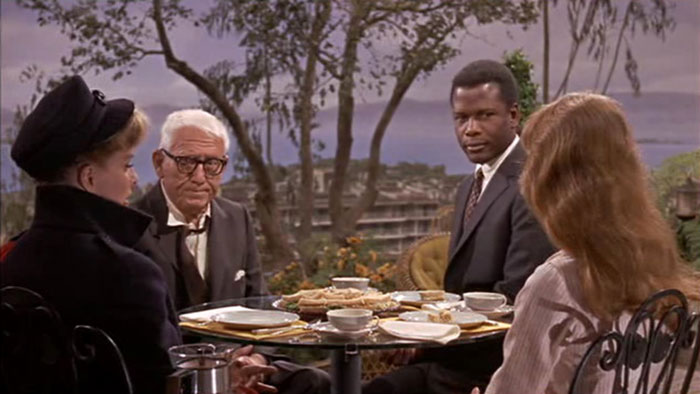
Directed by Stanley Kramer
35 mm color film
108 minutes
Columbia Pictures
Notwithstanding the persistence of white anxiety around race in the modern civil rights era, popular culture rarely challenged the millions of people who had escaped the rigorous media scrutiny previously reserved for white supremacists and redneck police chiefs. In the rare instance when racism outside the South was examined in film, the result was cautious or unchallenging—a problem notable in Guess Who’s Coming to Dinner, the Academy Award–winning movie starring Spencer Tracy and Katharine Hepburn as an affluent white San Francisco couple who consider themselves progressive, until their daughter brings home her black fiancé.
The film centers on a dinner party in the couple’s elegant home, during which the interracial lovers—Joanna Drayton (Katharine Houghton) and Dr. John Wade Prentice (Sidney Poitier), a prominent African American physician—meet their respective in-laws for the first time. The dinner unfolds as a series of polite conversations about the possibility and practicality of interracial marriage. On one level, Guess Who’s Coming to Dinner was mildly progressive for its time, representing an interracial relationship—no less between a black man and a white woman—that both sets of parents come to accept by the film’s end. Yet by refusing to address the ugly stereotypes and irrational fears at the heart of racism, of the liberal variety or otherwise, the film’s open-mindedness reaches only so far.
The script goes out of its way to make its white audience comfortable, from its depiction of the young doctor as exemplary and flawless, and thus unquestionably free of stereotypical drawbacks, to its rendering of the parents’ reactions—and their motivations—as equal. In the midst of increasing racial tensions, riots, and political assassinations in the country, the film’s genteel and tentative take on American race relations was anachronistic and out of step with political reality.
Maurice Berger